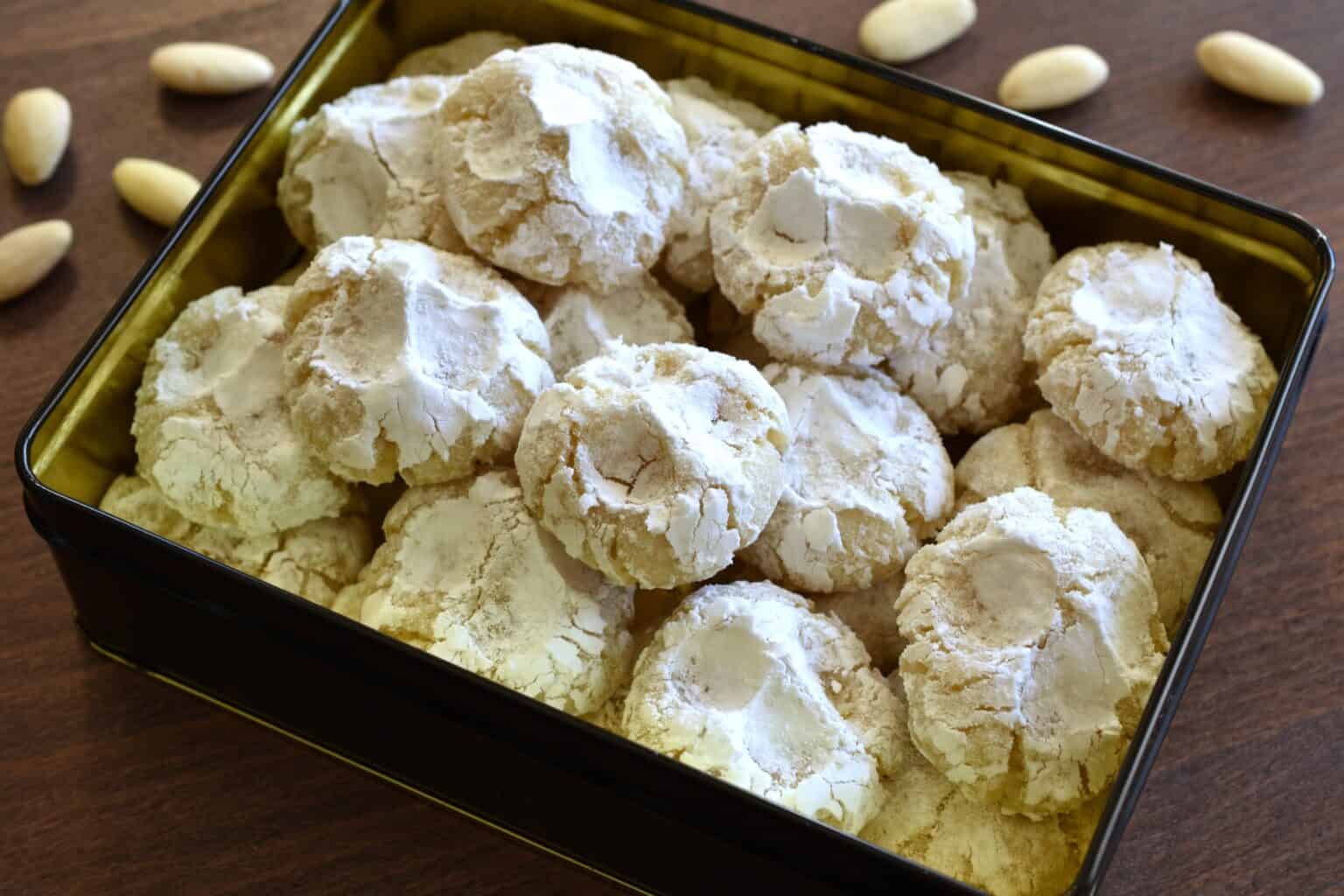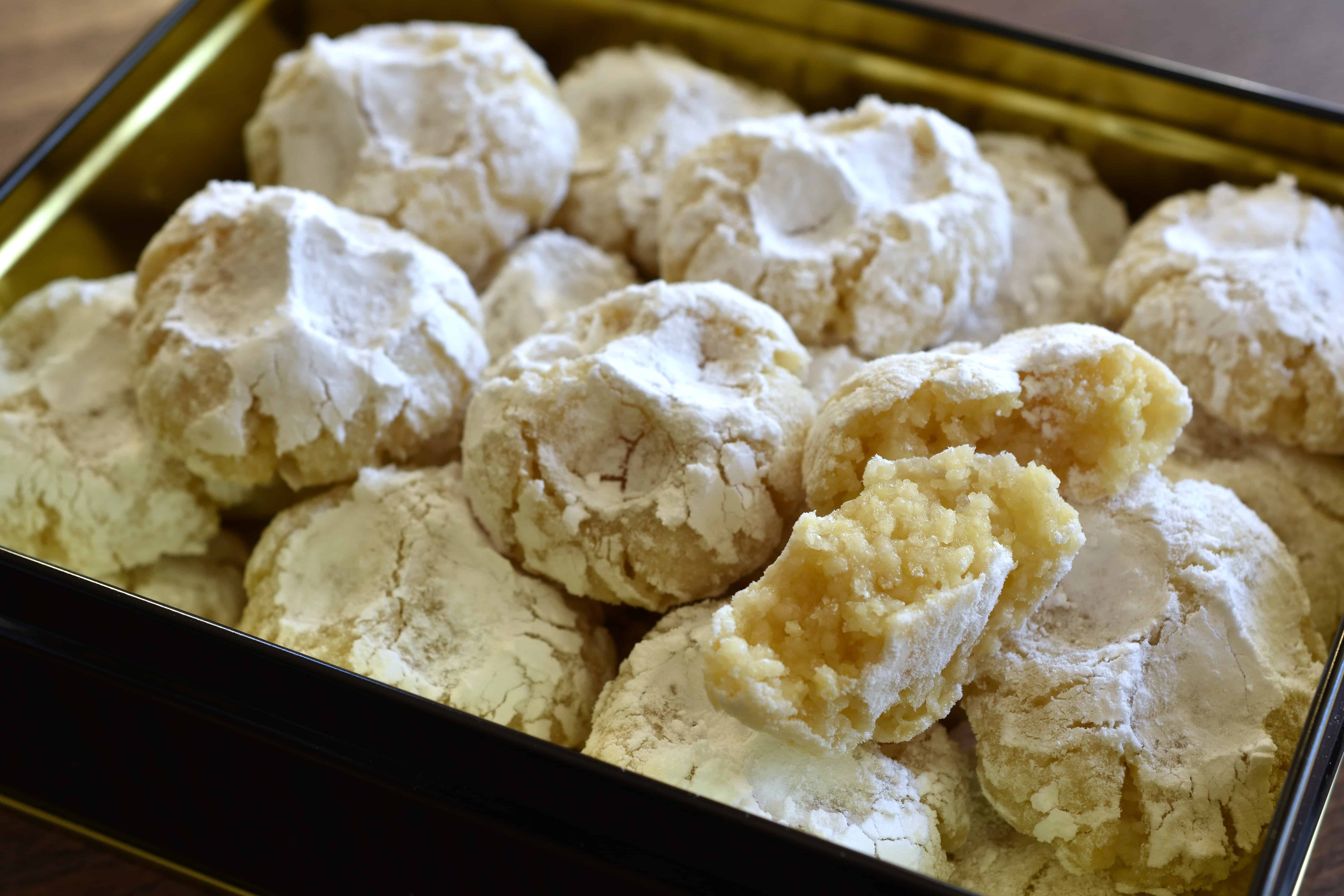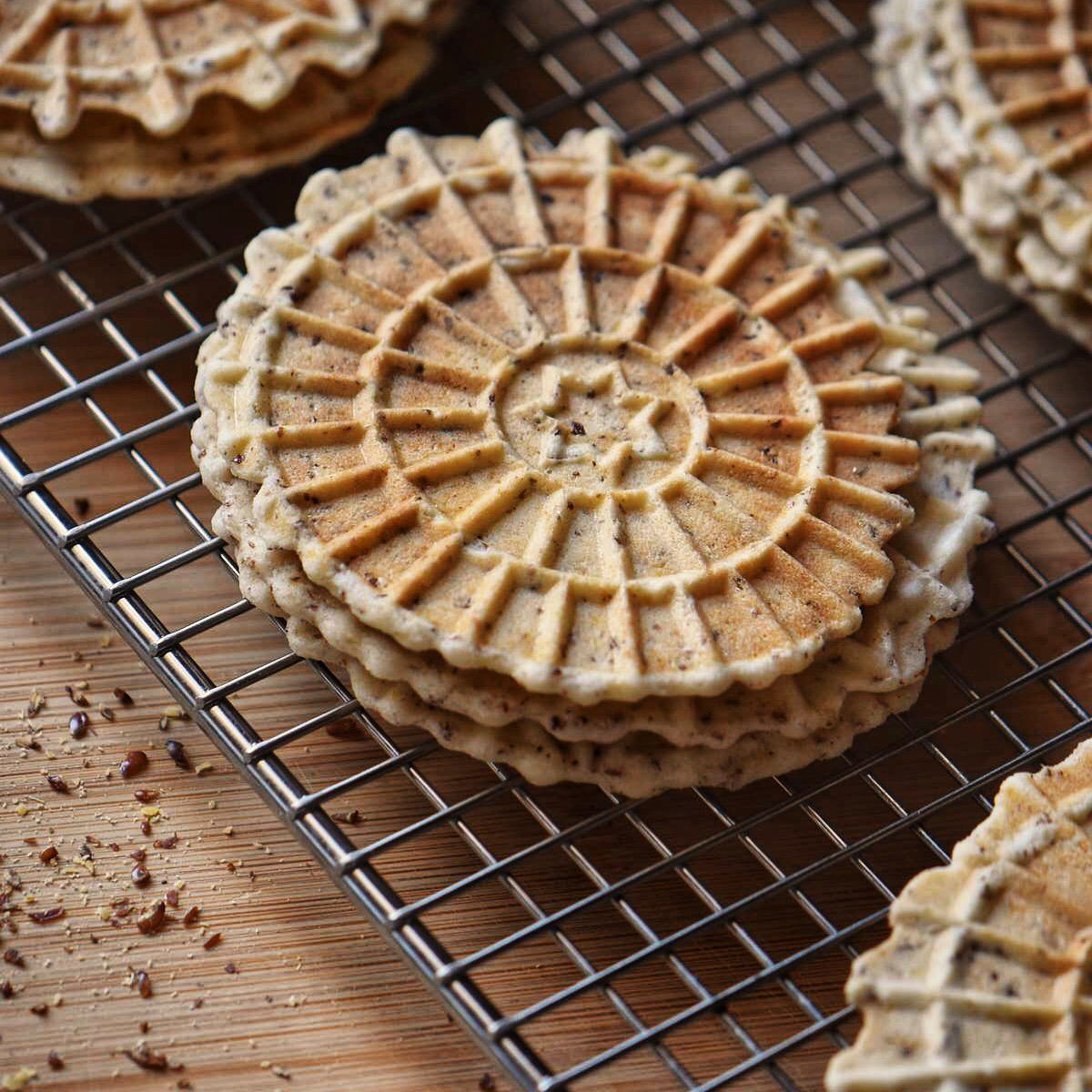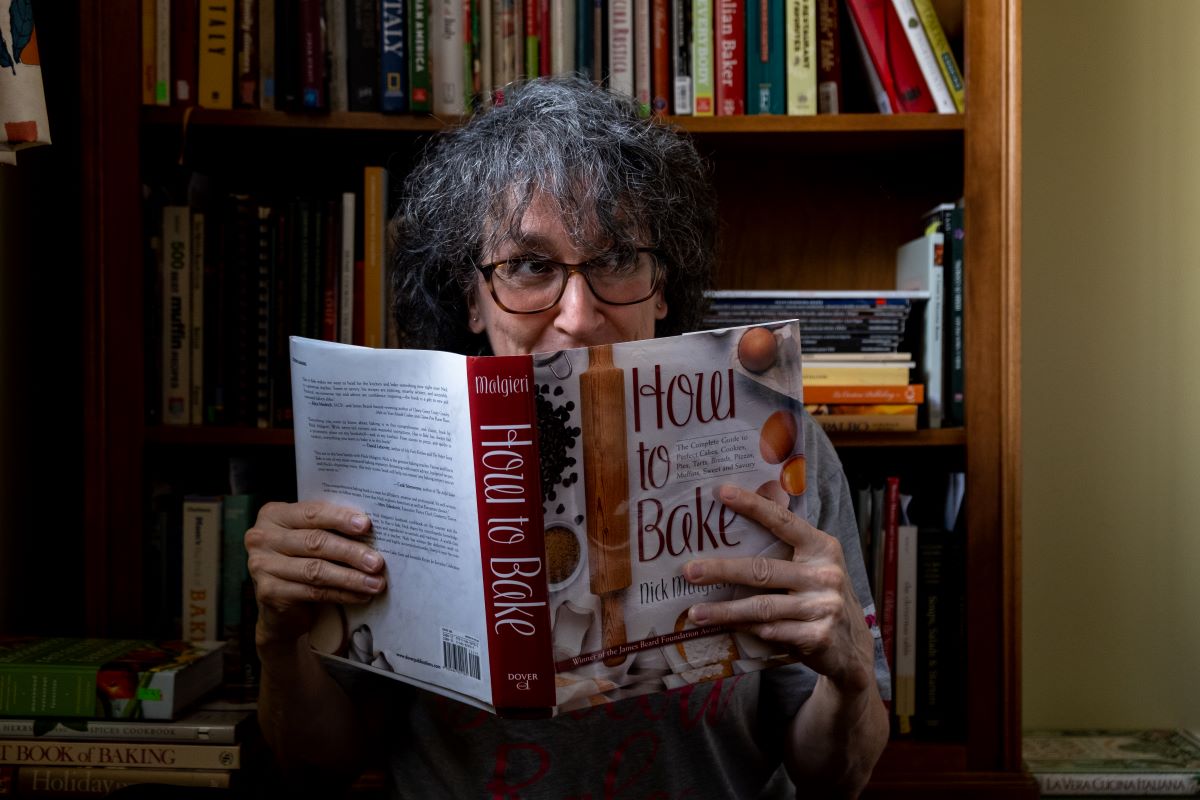Have you gotten your hands on good-quality almonds? Try making some Sicilian almond cookies!
One to try: pizzicotti alle mandorle. Made with freshly blanched almonds, these holiday-perfect cookies are named for the way they are pinched using the thumb, forefinger, and middle finger before they are set in the oven.
I recently stumbled on a plant-based pizzicotti recipe on veganhotstuff.com. Many of the recipes Switzerland-based blogger Deborah Bolton has published are vegan versions of Italian dishes. She shared with me more about her version of this classic cookie and her zero-waste way of using chickpea liquid, aquafaba, as a binding.
Tell us about this almond cookie recipe and what inspired you to make it.
This almond cookie recipe originates from Southern Italy, particularly Sicily, where almonds grow abundantly in the warm Mediterranean climate. These cookies are called pizzicotti alle mandorle in Italian, where pizzicotti means pinches and mandorle is the word for almonds.
Pizzicotti alle mandorle are irresistibly crunchy on the outside with a soft, chewy center that melts in your mouth. I was inspired to make this recipe because I wanted to make a plant-based version that no one would be able to distinguish from the original. This recipe can be enjoyed by omnivores, vegans, and people with egg allergies alike.
What is the significance of this cookie recipe?
Almonds have always been significant in Italian culture, symbolizing good luck and prosperity. Pizzicotti alle mandorle embody this tradition and often appear during festive occasions and special gatherings. In Sicily, they are a cherished part of feast day celebrations and weddings, symbolizing good fortune and the sweetness of life. These traditional almond biscuits are often made using family recipes that have been handed down through the centuries. Skilled artisans and home bakers alike take pride in their meticulous preparation.

If you love almonds, you'll adore pizzicotti alle mandorle. Photo by Deborah Bolton.
How is your recipe different from the traditional cookie?
As always, I like to keep traditional recipes as authentic as possible but without the use of animal products. The only difference between my recipe and the traditional cookie is the absence of egg white, which I substituted with aquafaba. Aquafaba is the cooking liquid in a jar or can of chickpeas. It has similar emulsifying, foaming, binding, gelatinizing, and thickening properties to egg whites, and the taste is absolutely undetectable. This recipe turned out perfect, and no one could tell that they were vegan.
Another thing I like about using aquafaba is the fact it aligns with my zero-waste philosophy. Chickpea water normally gets thrown away. Using it in our recipes instead of eggs is far better than exploiting hens and costs nothing.
Are there any specific types of ingredients that work best for this recipe?
Yes. While it's possible to use either blanched or non-blanched almonds, I recommend using blanched (peeled) almonds because they yield an attractive-looking white cookie. In contrast, the brown skin on unpeeled almonds would result in a slightly darker cookie with brown flecks, which would be ideal for amaretti, for example, but not so much for pizzicotti. It's best to use ground almonds, also known as almond meal, rather than almond flour to ensure you get the right texture. If you can't find ready-ground almonds, just buy whole ones. It's very easy to grind your own. This recipe calls for lemon zest, so make sure you use lemons with an edible peel.
Last but not least—sugar. Not all sugar is vegan because bone char is often used in the refining process, so check labels. I use white vegan caster sugar. Caster sugar is finer than granulated sugar, which is ideal for this recipe.
What are the most critical steps in the preparation process?
This recipe is actually super easy to make. The most critical step is probably weighing the ingredients precisely. If you're approximate, it will definitely affect the texture of the cookies. Use a good kitchen scale because even slight variations in the amount of moisture will cause the cookies to either spread in the oven and lose their characteristic shape or be harder than they should be. The only other critical step is understanding when the cookies are done. They should be soft and pale when they come out of the oven and firm up as they cool.
Crunchy on the outside and chewy inside. Photo by Deborah Bolton.
What do you hope readers will take away from this recipe?
I hope readers will not only fall in love with the taste of these almond cookies but also appreciate the simplicity and authenticity of the recipe. With their crunchy exterior and soft, chewy center, they remain true to the traditional Sicilian cookie, even with the vegan twist. What's even better is the satisfaction of making a cruelty-free version that's just as good as the original, if not better. I also hope it inspires people to be creative with their plant-based cooking and consider the environmental and ethical benefits of using ingredients like aquafaba. And since they make such great edible gifts, especially around Christmas, I hope readers feel encouraged to share them with loved ones, knowing they're spreading a little piece of sweet, homemade joy!
>>Get Deborah's pizzicotti delle mandorle recipe here!<<
If you enjoyed this article, consider subscribing to my newsletter for more content and updates!




